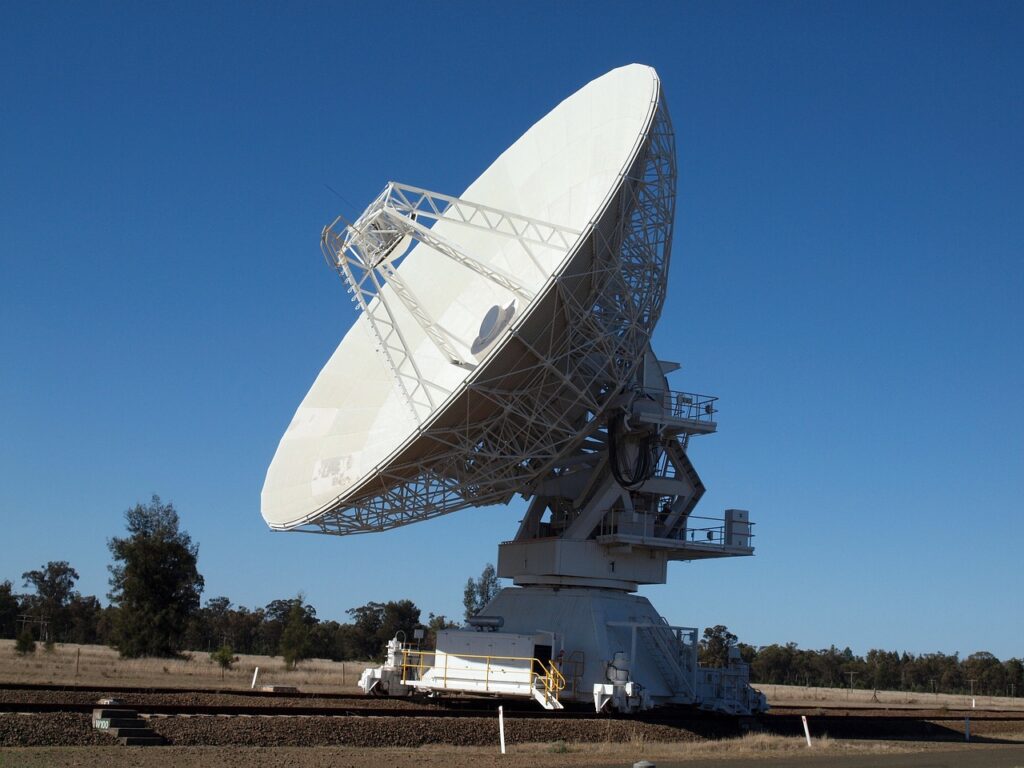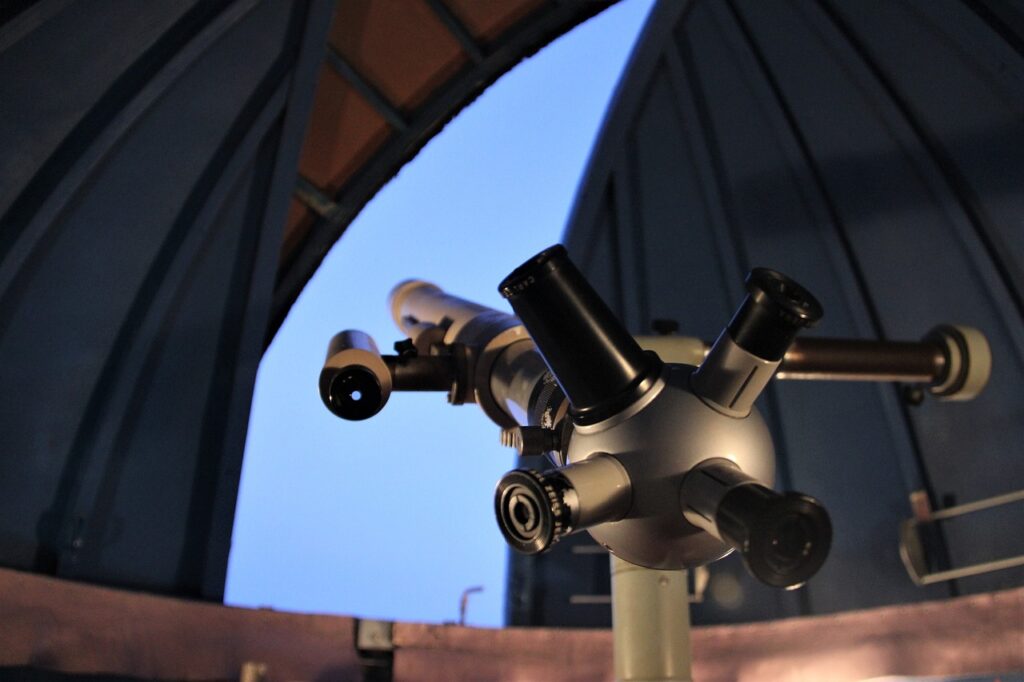Imagine standing atop the stunning summit of Mauna Kea, surrounded by a vast expanse of clear skies and breathtaking views. Now, picture yourself peering through the lens of a powerful telescope, unlocking the secrets of the universe. Welcome to the world of the Mauna Kea Observatories, where cutting-edge technology and curious minds come together to unravel the mysteries of space. In this article, we will delve into the wonders that await you at this extraordinary scientific hub, and why it is a must-visit destination for any astronomy enthusiast. Whether you are a seasoned stargazer or simply have an interest in the cosmos, prepare yourself for an awe-inspiring journey through the Mauna Kea Observatories.

History of the Mauna Kea Observatories
Establishment of the first observatory
The history of the Mauna Kea Observatories dates back to the 1960s when the University of Hawaii established a small, makeshift observatory on the summit of Mauna Kea. This initial observatory, known as the Mees Observatory, served as the foundation for the future development of the other observatories on the mountain. Its location was chosen due to its high elevation and resulting clear skies, making it an ideal spot for astronomical observations.
Expansion and growth of the observatory complex
As the potential of Mauna Kea for astronomy became evident, more institutions and countries expressed interest in establishing their own observatories on the mountain. Over the years, the observatory complex grew, with each institution bringing its own expertise and resources. This collaboration resulted in the construction of cutting-edge telescopes and research facilities.
Collaboration among international institutions
The Mauna Kea Observatories are an excellent example of international collaboration in the field of astronomy. Institutions and countries from around the world have come together to make use of the unique observing conditions offered by Mauna Kea. This collaboration has led to significant advancements in our understanding of the universe and has fostered a spirit of cooperation and knowledge sharing among the scientific community.
Location and Unique Features
Geographical location of Mauna Kea
Mauna Kea, located on the Big Island of Hawaii, is a dormant volcano that stands tall at an impressive height of 13,796 feet (4,205 meters) above sea level. Its location in the middle of the Pacific Ocean and away from major sources of pollution makes it an excellent site for astronomical observations.
Elevation and atmospheric conditions
One of the key factors that make Mauna Kea such a desirable location for observatories is its high elevation. Being above a significant portion of the Earth’s atmosphere reduces the amount of atmospheric interference that can distort astronomical observations. This allows astronomers to capture clearer and more detailed images of celestial objects.
Importance of the dark skies
Another unique feature of Mauna Kea is its dark skies. The mountain is located far away from cities and other sources of light pollution, resulting in minimal light interference during nighttime observations. This darkness allows astronomers to study faint and distant objects that would otherwise be obscured in more light-polluted areas. It also contributes to the preservation of the natural beauty of the night sky for future generations.
Telescopes at Mauna Kea
Overview of the different telescopes
The Mauna Kea Observatories are home to a wide range of telescopes, each equipped with its own capabilities and scientific objectives. Some of the notable telescopes include the Keck Observatory, the Subaru Telescope, and the Gemini Observatory. These state-of-the-art telescopes are used to study various aspects of the universe, from the search for exoplanets to the observation of distant galaxies.
Advanced technologies and instruments
The telescopes at Mauna Kea are equipped with advanced technologies and instruments that allow astronomers to conduct groundbreaking research. Adaptive optics systems, for example, help compensate for atmospheric distortions, resulting in sharper images. Spectrographs and cameras with high sensitivity enable the measurement of faint signals and the capture of detailed images of celestial objects.
Contributions to astronomical discoveries
The telescopes at Mauna Kea have played a pivotal role in numerous astronomical discoveries and breakthroughs. They have been instrumental in the discovery of exoplanets, aiding in the search for habitable worlds beyond our solar system. Additionally, these telescopes have provided valuable insights into the nature of distant galaxies, the birth and death of stars, and the structure of the universe itself.
Challenges and Controversies
Environmental impact and protection
The construction and operation of the observatories on Mauna Kea have raised concerns about their environmental impact. The fragile ecosystem of the mountain’s summit is home to several endemic plant and animal species, some of which are considered endangered. Efforts are being made to minimize the impact of the observatories on the environment through measures such as limited development, strict waste management, and wildlife protection programs.
Concerns raised by the Native Hawaiian communities
The Mauna Kea Observatories are located on sacred land for the Native Hawaiian communities. Many have expressed concerns about the cultural and spiritual significance of the mountain and believe that the construction of telescopes on its summit is a violation of their rights and traditions. These concerns have sparked debates and protests, highlighting the need for meaningful dialogue and respectful engagement with the local communities.
Legal battles and protests
The issue of constructing telescopes on Mauna Kea has been a subject of legal battles and protests. Various legal challenges have been brought forward by environmental and Native Hawaiian groups seeking to halt the construction of new telescopes and protect the cultural and natural heritage of the mountain. These conflicts underscore the importance of finding a balanced approach that respects both scientific progress and cultural preservation.

Access and Visiting Information
Guided tours and public access
Visitors to Mauna Kea have the opportunity to explore the observatories and learn about the fascinating world of astronomy through guided tours. These tours provide insights into the telescopes’ operations, the research being conducted, and the unique observing conditions on the mountain. Public access to telescope domes is limited to ensure the preservation of the instruments and the integrity of ongoing scientific research.
Visitor center and exhibits
The Onizuka Center for International Astronomy, located at the 9,300-foot level of Mauna Kea, serves as a visitor center for those interested in learning more about the observatories and astronomy in general. The center features interactive exhibits, educational programs, and displays that showcase the history and achievements of the Mauna Kea Observatories. It provides a valuable educational resource for visitors of all ages.
Stargazing and educational programs
Mauna Kea offers unique stargazing opportunities due to its pristine dark skies. Visitors can participate in stargazing programs organized by the observatories and experience the wonder of the universe firsthand. These programs often include presentations by astronomers, telescope viewing sessions, and informative discussions about various celestial objects and phenomena.
Scientific Discoveries at Mauna Kea
Major astronomical findings
The Mauna Kea Observatories have been at the forefront of major astronomical discoveries. From the detection of the first exoplanets to the measurement of the accelerating expansion of the universe, the telescopes on Mauna Kea have revolutionized our understanding of the cosmos. These discoveries have provided insights into the origins of galaxies, the nature of dark matter and dark energy, and the potential for life beyond Earth.
Contributions to astrophysics and cosmology
The observations and research conducted at Mauna Kea have significantly advanced the fields of astrophysics and cosmology. The detailed studies of distant galaxies have shed light on the formation and evolution of these cosmic structures. Measurements of cosmic microwave background radiation have provided crucial evidence for the Big Bang theory. The insights gained from Mauna Kea observations continue to shape our understanding of the universe.
Exoplanet research and discovery
Exoplanet research is another area in which Mauna Kea has made remarkable contributions. The powerful telescopes on the mountain have allowed astronomers to detect and characterize numerous exoplanets orbiting distant stars. These discoveries have expanded our knowledge of planetary systems, their formation mechanisms, and the potential for habitable environments in other parts of the galaxy.

Future Developments and Projects
Upcoming telescopes and instruments
Despite the ongoing challenges and controversies, there are plans for the development of new telescopes and instruments at Mauna Kea. The Thirty Meter Telescope (TMT) is one such project that aims to push the boundaries of astronomical observations with its enormous collecting area and advanced technologies. Other projects, such as the Daniel K. Inouye Solar Telescope, focus on studying our own star, the Sun, in unprecedented detail.
Expansion plans and challenges
Expanding the observatory complex on Mauna Kea comes with its own set of challenges. Striking a balance between scientific progress, environmental preservation, and cultural sensitivity remains a complex task. The need to address concerns raised by Native Hawaiian communities and satisfy legal requirements necessitates careful planning and collaboration among all stakeholders involved.
Promising discoveries on the horizon
The future of astronomical research at Mauna Kea holds promise for exciting discoveries. With the upcoming telescopes and instruments, scientists hope to delve deeper into the mysteries of the universe, unravel the nature of dark matter and dark energy, and potentially find signs of life beyond Earth. The unique observing conditions offered by Mauna Kea make it an invaluable location for pushing the boundaries of our knowledge about the cosmos.
Collaborations and Partnerships
Participation of different countries and institutions
The Mauna Kea Observatories represent a truly global endeavor, with participation from numerous countries and institutions worldwide. Scientists and engineers from different backgrounds collaborate to build, operate, and maintain the observatories, ensuring a rich diversity of expertise and perspectives. This international collaboration is a testament to the shared passion for exploring the universe and understanding our place within it.
International cooperation and knowledge sharing
The success of the Mauna Kea Observatories is built upon the principles of international cooperation and knowledge sharing. Scientists and researchers from various institutions work together, openly sharing their data, expertise, and discoveries. This collaborative spirit has fostered rapid advancements in the field of astronomy and has led to breakthroughs that would not have been possible through individual efforts alone.
Successes and challenges of collaborative efforts
The collaborative nature of the Mauna Kea Observatories has yielded numerous successes and achievements. By pooling resources and expertise, scientists have been able to tackle complex research questions and make significant discoveries. However, collaboration also presents its own set of challenges, such as coordinating schedules, managing differences in research priorities, and establishing common standards for data sharing. Overcoming these challenges requires effective communication and ongoing cooperation.
Astronomy Tourism at Mauna Kea
The popularity of astronomy tourism
Mauna Kea has become a popular destination for astronomy enthusiasts and tourists alike. The opportunity to witness the wonders of the night sky from an exceptional vantage point draws visitors from around the world. Astronomy-themed tours and activities provide an immersive experience, allowing visitors to learn about the universe while enjoying the breathtaking beauty of Mauna Kea.
Visitors’ experiences and activities
Visitors to Mauna Kea can expect a wide range of activities that cater to their interests and curiosity. From stargazing programs and telescope viewing sessions to educational presentations by astronomers, there is something for everyone. Additionally, some of the observatories offer opportunities for visitors to engage directly with the scientists and learn about their research firsthand.
Dedicated observatories for public viewing
In order to accommodate the growing interest in astronomy tourism, a dedicated observatory for public viewing, the Canada-France-Hawaii Telescope, is also situated on Mauna Kea. This public observatory provides visitors with access to telescopes and educational exhibits, allowing them to experience the thrill of observing celestial objects and learn about the wonders of the universe in an engaging and accessible manner.
Preserving the Cultural and Environmental Heritage
Efforts to respect Native Hawaiian traditions
Recognizing the importance of the cultural and spiritual heritage of Mauna Kea, efforts are being made to respect Native Hawaiian traditions. Collaboration with Native Hawaiian organizations and cultural experts helps to ensure that the construction and operation of the observatories are conducted in a manner that is considerate of the mountain’s significance to the local communities. This includes initiatives to incorporate cultural practices and beliefs into the observatory operations and visitor programs.
Mitigating the impact on the natural environment
Steps are being taken to minimize the impact of the observatories on the delicate ecosystem of Mauna Kea. Strict waste management protocols, the use of green technologies, and measures to protect endangered species help mitigate the environmental impact. Environmental monitoring programs track the health of the ecosystem, ensuring that any potential issues can be addressed promptly and effectively.
Balancing cultural preservation and scientific exploration
Preserving the cultural heritage of Mauna Kea while advancing scientific exploration is a delicate balancing act. Recognizing and understanding the perspectives and concerns of the Native Hawaiian communities is essential for maintaining a harmonious relationship between the observatories and the local culture. Ongoing dialogue and collaboration between stakeholders continue to shape policies and practices that strike a balance between cultural preservation and scientific progress.
As the Mauna Kea Observatories continue to push the boundaries of astronomical research, it is crucial to recognize and respect the unique qualities of the mountain. Its pristine skies, combined with international collaboration and cutting-edge technologies, have made Mauna Kea a global hub for scientific discovery. By embracing the challenges, fostering meaningful partnerships, and maintaining a collaborative approach, we can ensure that Mauna Kea remains a beacon of scientific exploration while preserving its cultural and environmental heritage for generations to come.
